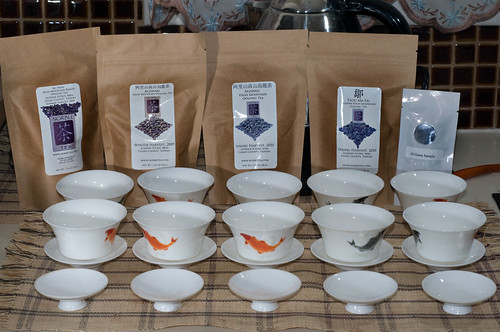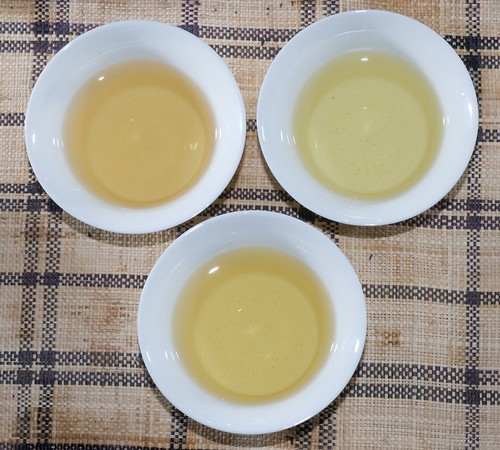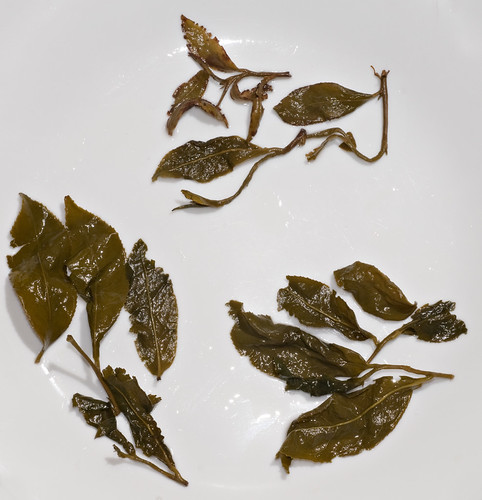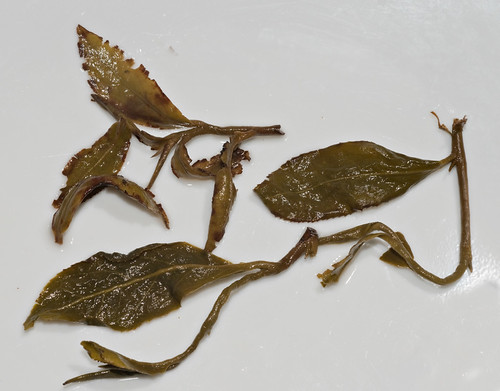Alishan High Mountain
Taiwanese Oolongs from Norbu
March 2011
I thought I had set aside unopened packages of each of these to use in
this comparison tasting, but realized that I'd twice dipped into the
collection at some point in the past few months, and hadn't dated when
the packages were opened.






